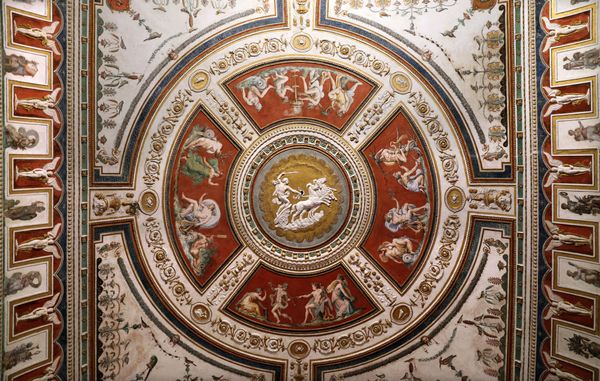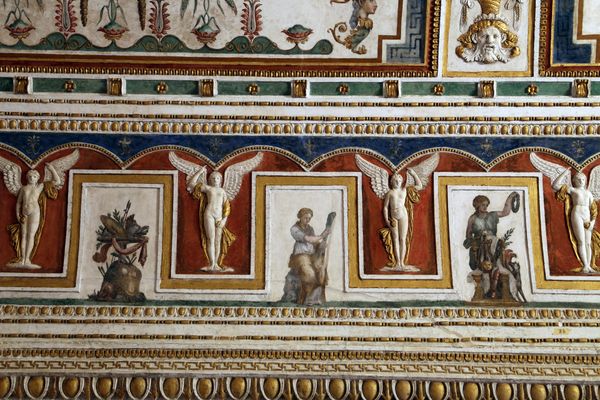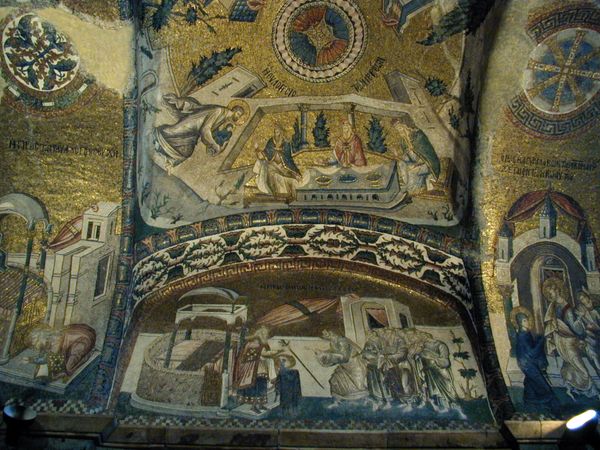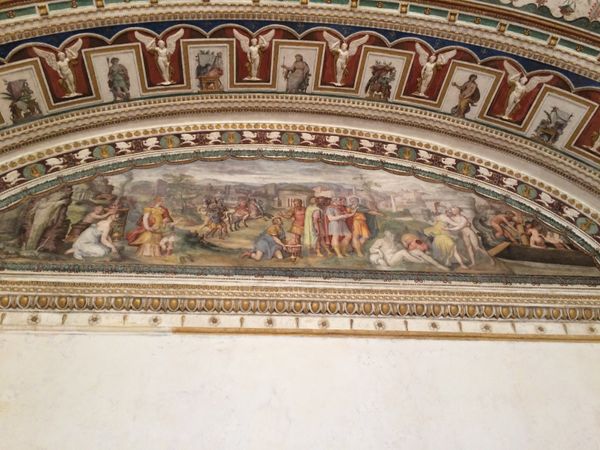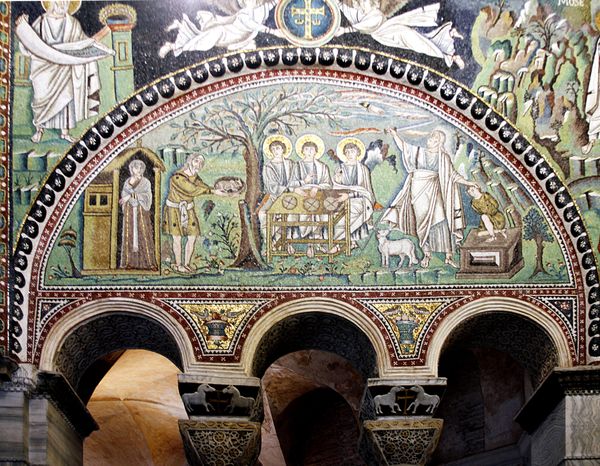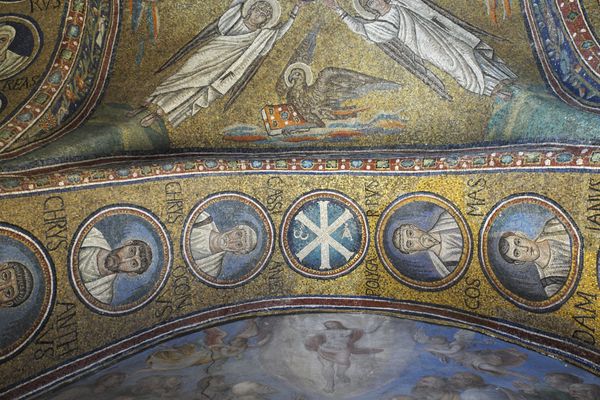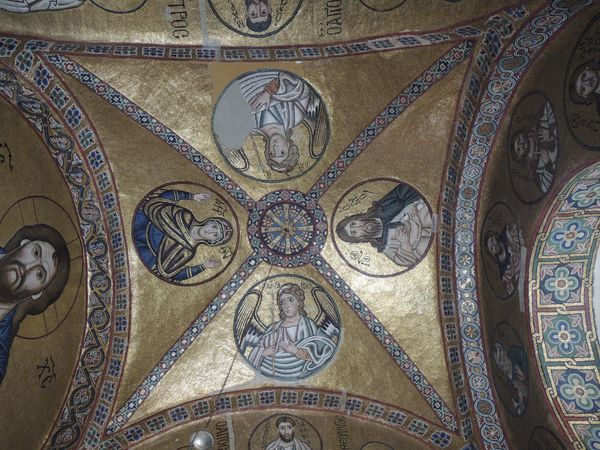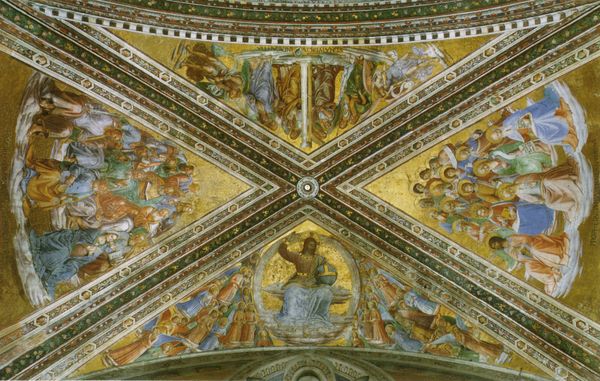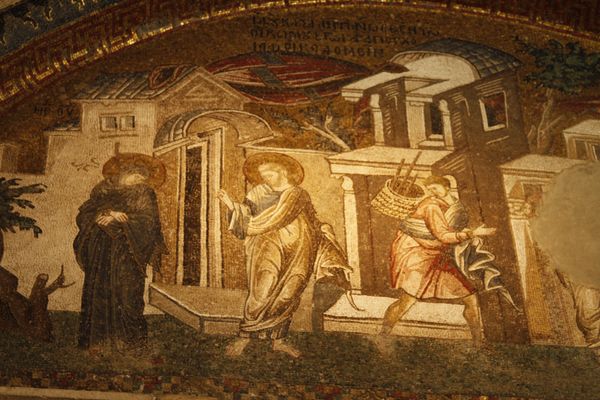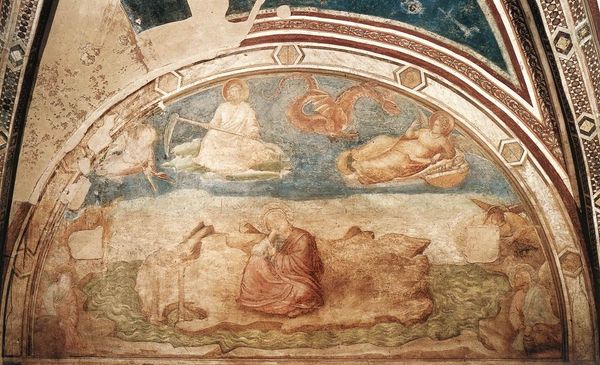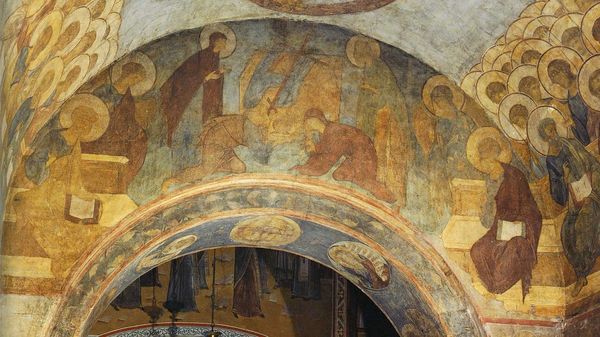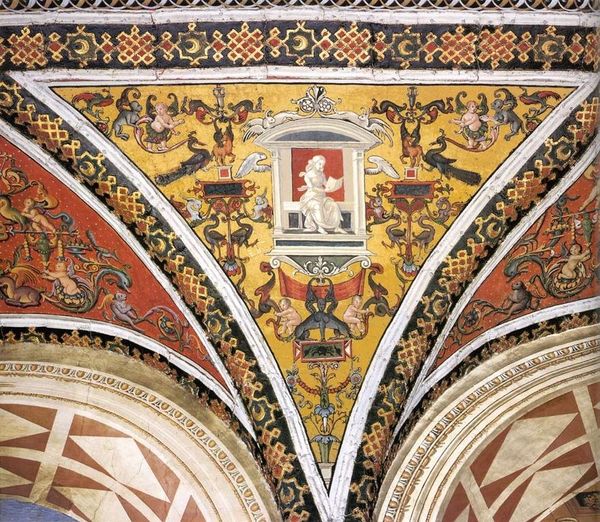
Stanza Di Apollo 1540
0:00
0:00
francescoderossifrancescosalviaticecchino
Palazzo Grimani di Santa Maria Formosa, Venice, Italy
tempera, painting, fresco
#
tempera
#
painting
#
sculpture
#
holy-places
#
mannerism
#
figuration
#
historic architecture
#
fresco
#
traditional architecture
#
geometric
#
italian-renaissance
#
historical building
#
building
Copyright: Public domain
Editor: So this is "Stanza di Apollo," a fresco by Francesco Salviati, painted around 1540 here in the Palazzo Grimani. It's full of these meticulously rendered birds. I'm curious— what do you see when you look at this, thinking about it from a materials perspective? Curator: Well, first I notice that it's a fresco. The very act of applying tempera to wet plaster implies labor. The artist, "Cecchino," as Salviati was nicknamed, didn’t just envision this scene; he constructed it layer by layer. Fresco isn't like painting on canvas; it's a process that demands speed, precision, and the understanding of materials science – how the pigments interact with the drying plaster. Do you think the choice of fresco affected its reception then versus now? Editor: That's interesting! I hadn't really thought about the physical limitations affecting the artist's process. In terms of reception, maybe the inherent durability of fresco would have signaled permanence and importance to its original viewers? Unlike a portable painting, this was designed to last. Curator: Precisely! And let’s think about the location. Palazzo Grimani was a showpiece. This “Apollo Room” declares wealth and sophisticated taste. The artist is showcasing his command of classical motifs, integrating them seamlessly. But the building materials themselves - where did the marble come from? How was the scaffolding constructed to reach these heights? Editor: It really shifts my perspective from the individual artistry to this wider network of labor and resources involved. And thinking about the repetition of certain geometric forms - were there workshops or specific craftsman involved that point to design lineage or standardization in Renaissance ornamentation? Curator: Exactly. That moves us into understanding this as not just individual genius, but as a part of production in the 16th century, and what that labor looked like in a wealthy city such as Venice. Editor: I never considered the process of Fresco beyond application, this has given me a great insight into a materialist perspective and its relation to production! Thanks. Curator: My pleasure; reflecting on materiality provides depth in considering both craft and high art, doesn’t it?
Comments
No comments
Be the first to comment and join the conversation on the ultimate creative platform.

